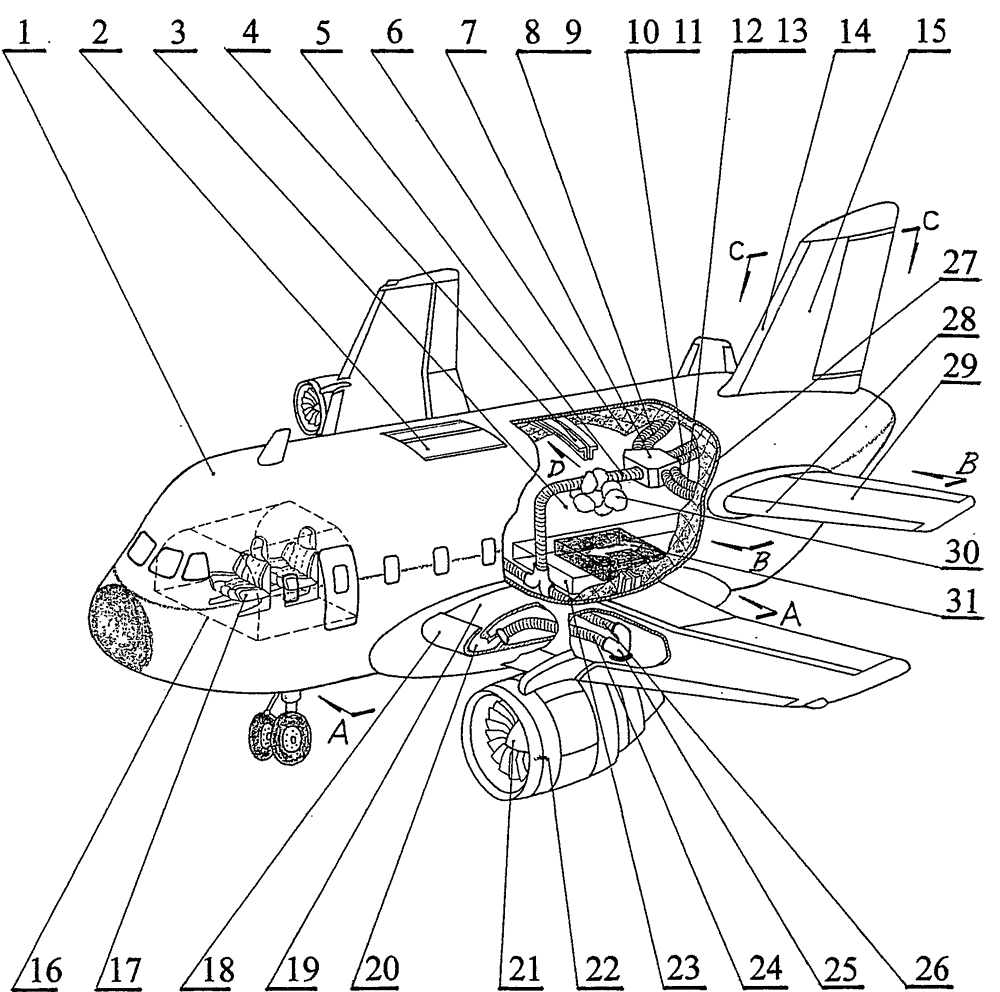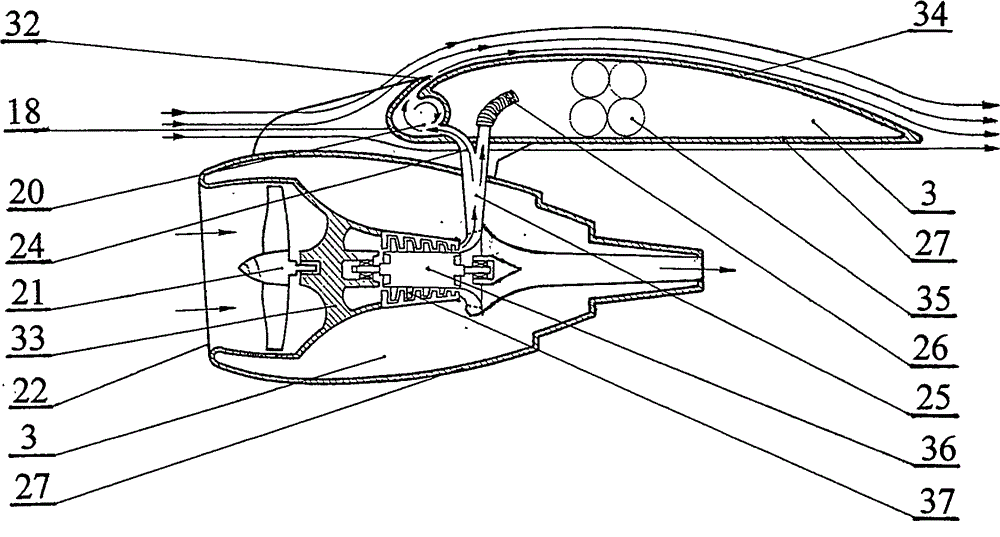Low-speed safety aircraft capable of controlling flight attitude by aerodynamic force
A technology of flight attitude and aircraft, which is applied in the field of aviation aircraft, can solve the problems of complicated actions, single application, and oversimplification, and achieve the effect of simple and easy driving, removing bulkiness and cumbersomeness, and slowing down the speed of descent
- Summary
- Abstract
- Description
- Claims
- Application Information
AI Technical Summary
Problems solved by technology
Method used
Image
Examples
Embodiment Construction
[0023] The following is attached figure 1 to attach Figure 6 The technical solution of the present invention is described in detail.
[0024] attached figure 1 , attached figure 2 As shown, the low-speed safety aircraft utilizing aerodynamic force to control flight attitude of the present invention comprises fuselage 1, wing 19, horizontal empennage 29, vertical empennage 15, engine 36, air compressor 37 to form, and engine 36 drives air compressor 37, output compression The air enters the vortex cavity 20 formed by the wing leading edge 18 from the flow divider 25 through the wing air supply pipe 24, and then reaches the airfoil 34 through the strip jet slot 32; the strip jet slot 32 is arranged at the radius of the wing leading edge 18 The arc transition part of the airfoil 34 , and the radius of the leading edge 18 of the wing along the long line of the arc of the airfoil 34 overlaps with the arc of the airfoil 34 , and leaves a strip jet slit 32 .
[0025] attached ...
PUM
 Login to View More
Login to View More Abstract
Description
Claims
Application Information
 Login to View More
Login to View More - R&D
- Intellectual Property
- Life Sciences
- Materials
- Tech Scout
- Unparalleled Data Quality
- Higher Quality Content
- 60% Fewer Hallucinations
Browse by: Latest US Patents, China's latest patents, Technical Efficacy Thesaurus, Application Domain, Technology Topic, Popular Technical Reports.
© 2025 PatSnap. All rights reserved.Legal|Privacy policy|Modern Slavery Act Transparency Statement|Sitemap|About US| Contact US: help@patsnap.com



